Tulum is notable for its blend of natural and human-made wonders, and although this has meant a rapidly rising popularity for the small town, the allure of its unique features is undeniable.
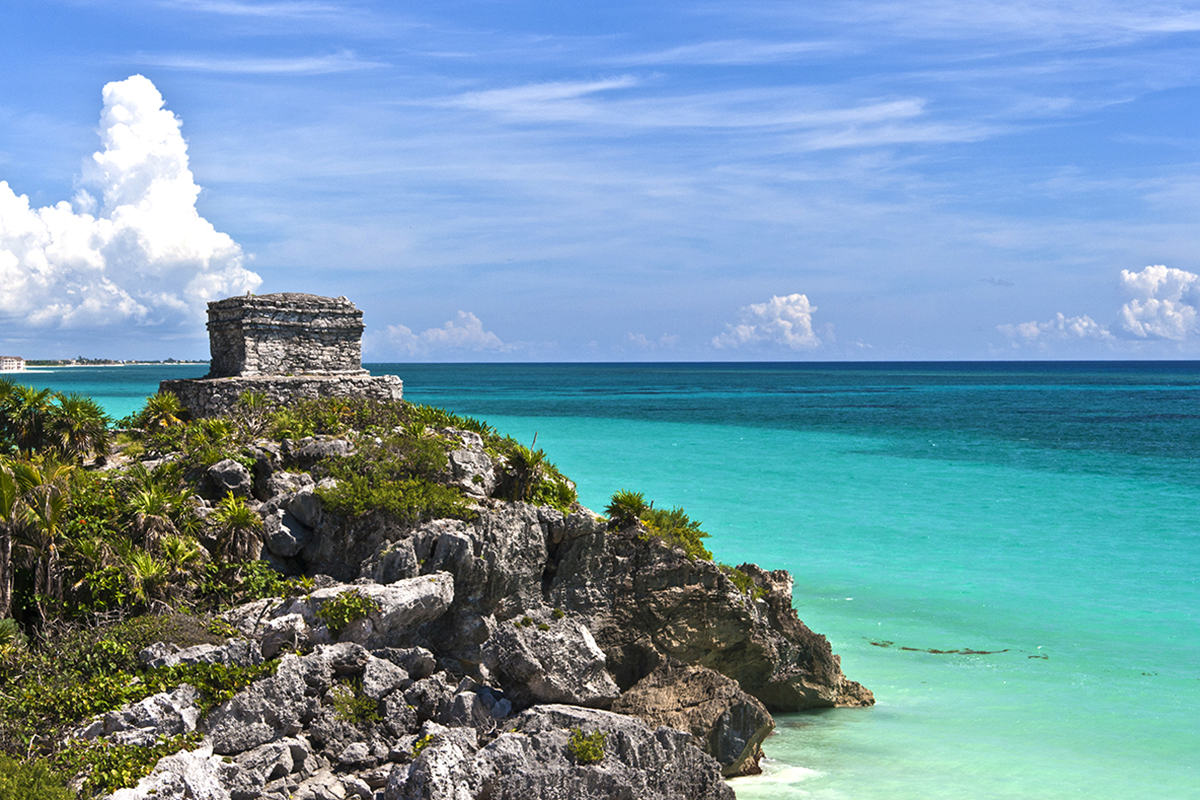
Maya ruins overlook the beautiful Caribbean (Photo: Camilo Gonzalez via Flickr / CC BY 2.0)
The alternative crowd has been attracted to Tulum, on the eastern shore of the Yucatan peninsula, for decades. But when it comes to Mexico’s Riviera Maya, best known for the likes of Cancún and Playa del Carmen, Tulum is now the region’s fastest rising star, with the main town mushrooming in size over the last decade.
Tulum is divided into two distinct areas: Tulum Playa, with its high-end beach resorts, spas and cabanas, where Maya ruins overlook the white sand and turquoise waters of the Caribbean Sea; and Tulum Pueblo, where most of the locals live. Pueblo is by far a more authentic Mexican experience, but although Playa is now a tourist trap, the beaches are still a must-see. Here are ten of the area’s most unique experiences.
Go swimming in the crystal-clear water of a cenote
A cenote (pronounced seh-NO-tay), is a natural sinkhole in the earth. Although the entire Yucatan peninsula has no rivers or streams, abundant water lies within the limestone land, and the cenotes have long been seen as a sacred form of life, supporting tens of thousands of Maya long before there were water supply networks. Around Tulum they are particularly abundant and their main purpose today is recreational. Not only are they a great way to escape the midday heat, but they are excellent for swimming, snorkelling, and for experienced divers, it is possible to scuba dive deep into the complex cave networks. Some of the best and accessible ones near Tulum are Gran Cenote, Cenote Tankah and Cenote Cristal.
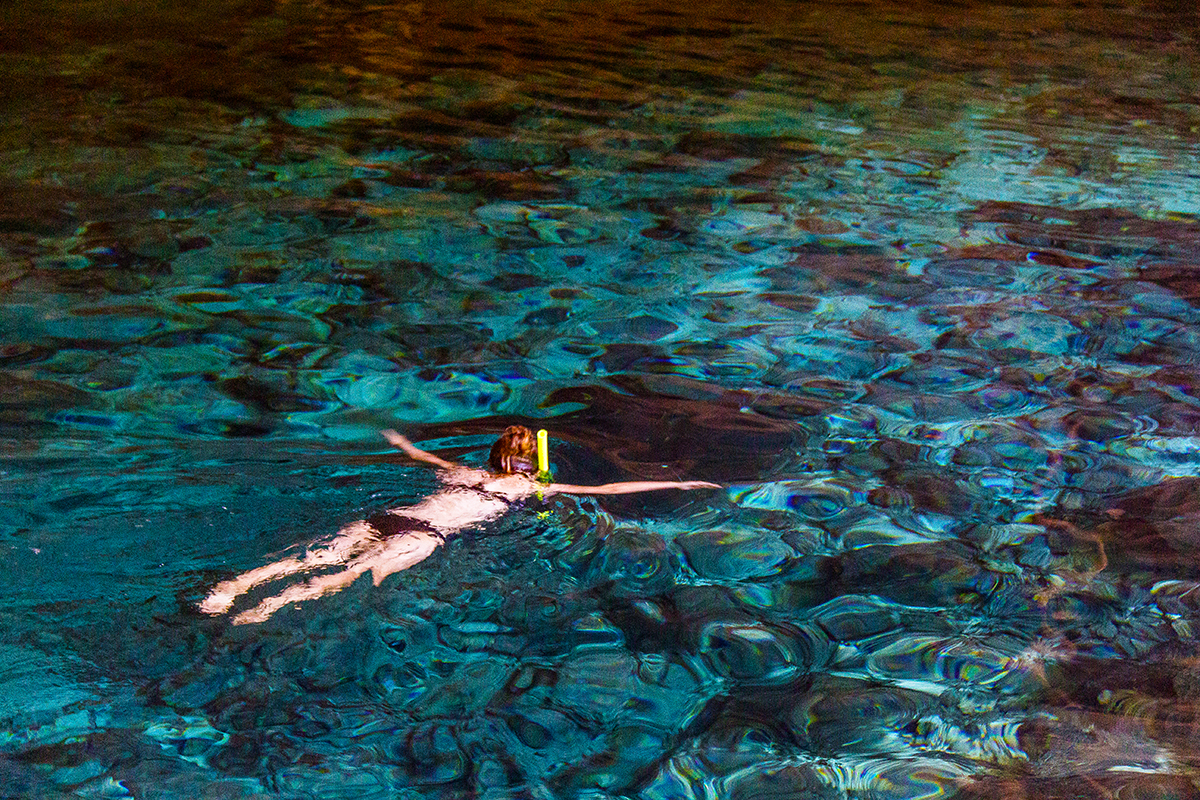
Swimming in a cenote’s clear water (Photo: Paul Stafford)
Explore an ancient Maya city
The photos of ancient temples atop high cliffs overlooking the impossibly turquoise Caribbean are famous the world over. They have largely contributed to the swift rise in Tulum’s popularity and with good reason. Although they are by no means the most extensive or impressive set of Maya ruins in the Yucatan, they are one of the few that lies so close to the sea. El Castillo is the best-preserved of the temples, at a site that is surrounded by a defensive wall, the likes of which are not so common in the Maya world. That’s because Tulum was a newer city in the Maya world when the Spanish arrived in the early 16th century. The best time to visit the ruins is at 8am when they first open and before the bus-loads of tour groups arrive. Keep an eye out for the colourful birdlife, families of coatis and iguanas around the site. If you’d prefer to explore with a local guide who can illuminate the past and the meaning of some of the features still visible, then check out this half-day tour of the ruins.
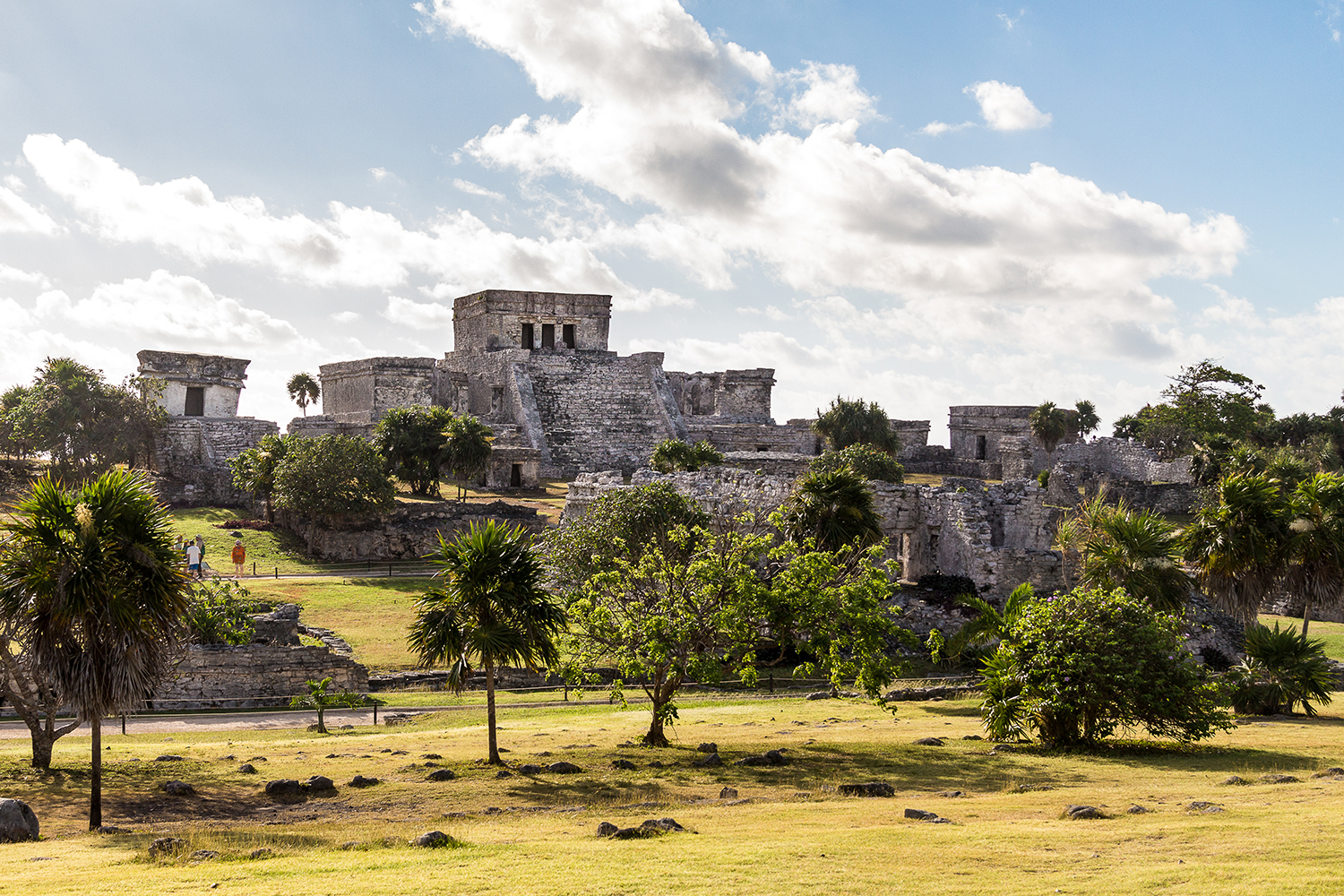
Tulum’s magnificent Maya ruins (Photo: Paul Stafford)
Take a tour of the area guided by a local
There are so many novel ways to experience the land around Tulum, whether you wish to stay in relative comfort and style, or the more adventurous way, such as through scuba diving or snorkelling in cenotes and the Caribbean. Alternatively there are group tours to places like the family-friendly Xcaret Park or some of the more popular ruins like the modern wonder of the world: Chichén Itzá or the forest-shrouded ruins that have only been partially excavated still and spread over many miles at Cobá. For a list of the tours available from Tulum to the surrounding areas, please click here.
Dig your toes into the fine sand
The Maya Riviera, which stretches south from Cancún to Tulum, is revered for its stunning, white sand beaches. A common misunderstanding is that most of these beaches are private. Technically (and legally) they’re all open to the public, although most of the riviera has been portioned out between huge hotel resorts with access to the beaches made almost impossible without crossing private property. But there are ways and means and that is just as well because the beach at Tulum is exquisite. If you’d prefer to kick back in more comfort, Ziggy’s Beach Club is an excellent option for enjoying the kind of service that exclusive resort guests usually receive. Although it’s free to use their beach chairs, the deal is that there’s a minimum spend per person on food and drinks (typically about $25) to use their space and facilities, which is fair, as the food is very highly rated. For a good stretch of sand free from such caveats however, head for Playa Paraiso.
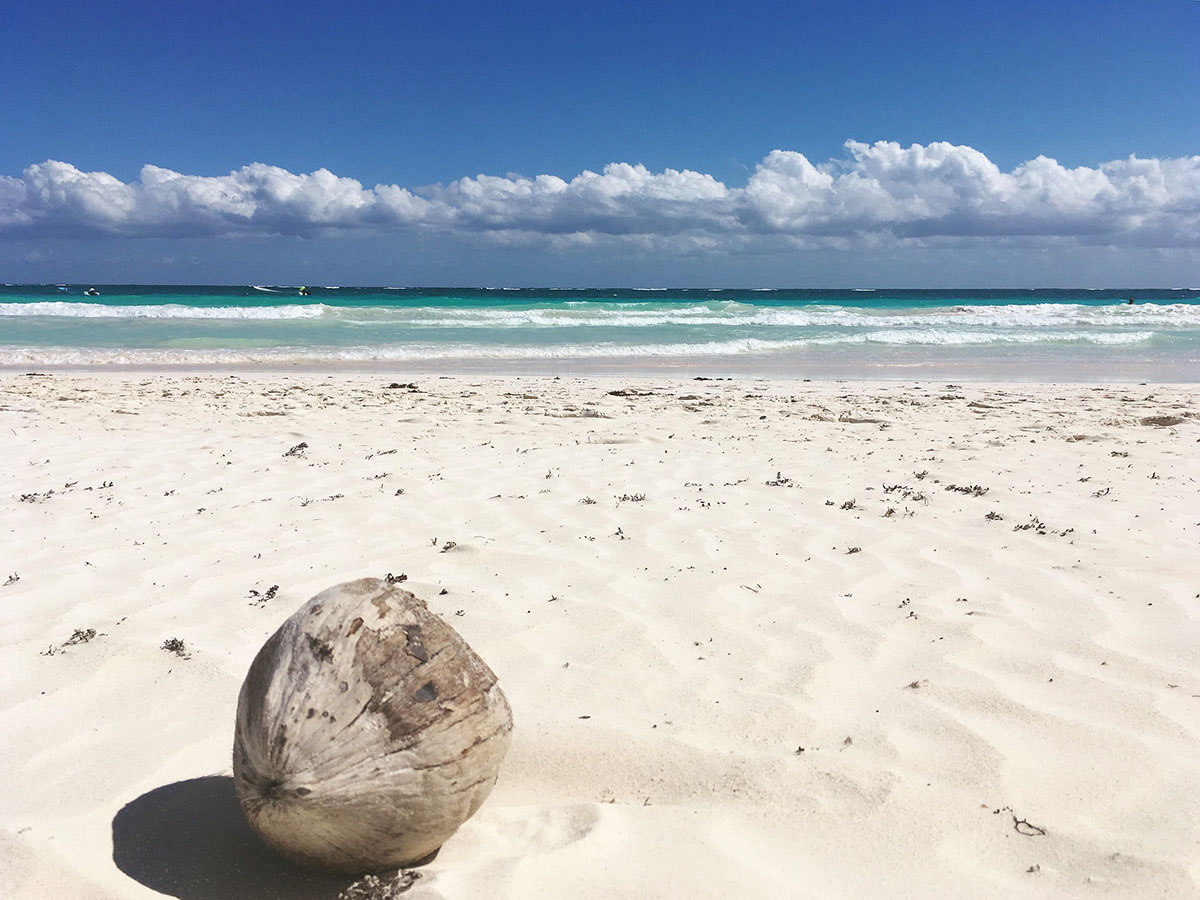
A coconut on Playa Paraiso (Photo: Jules Antonio via Flickr / CC BY-SA 2.0)
Sian Ka’an Biosphere Reserve
One of the less visited attractions in the area, Sian Ka’an (which means Origin of the Sky) was declared a UNESCO World Heritage site in 1987. The biodiversity here is truly profound. It’s home to jaguars, pumas, pink flamingos, sharks, manatees, spider monkeys, hundreds of species of birds, and much more. Covering more than a million acres, the biosphere is an integral part of the Yucatan ecosystem. You can take guided tours through the mangrove forests, marshes and coastal lagoons. This is a great option for nature lovers who appreciate sustainable tourism and want to avoid the mass tours and crowds at other tourist sites in the region.
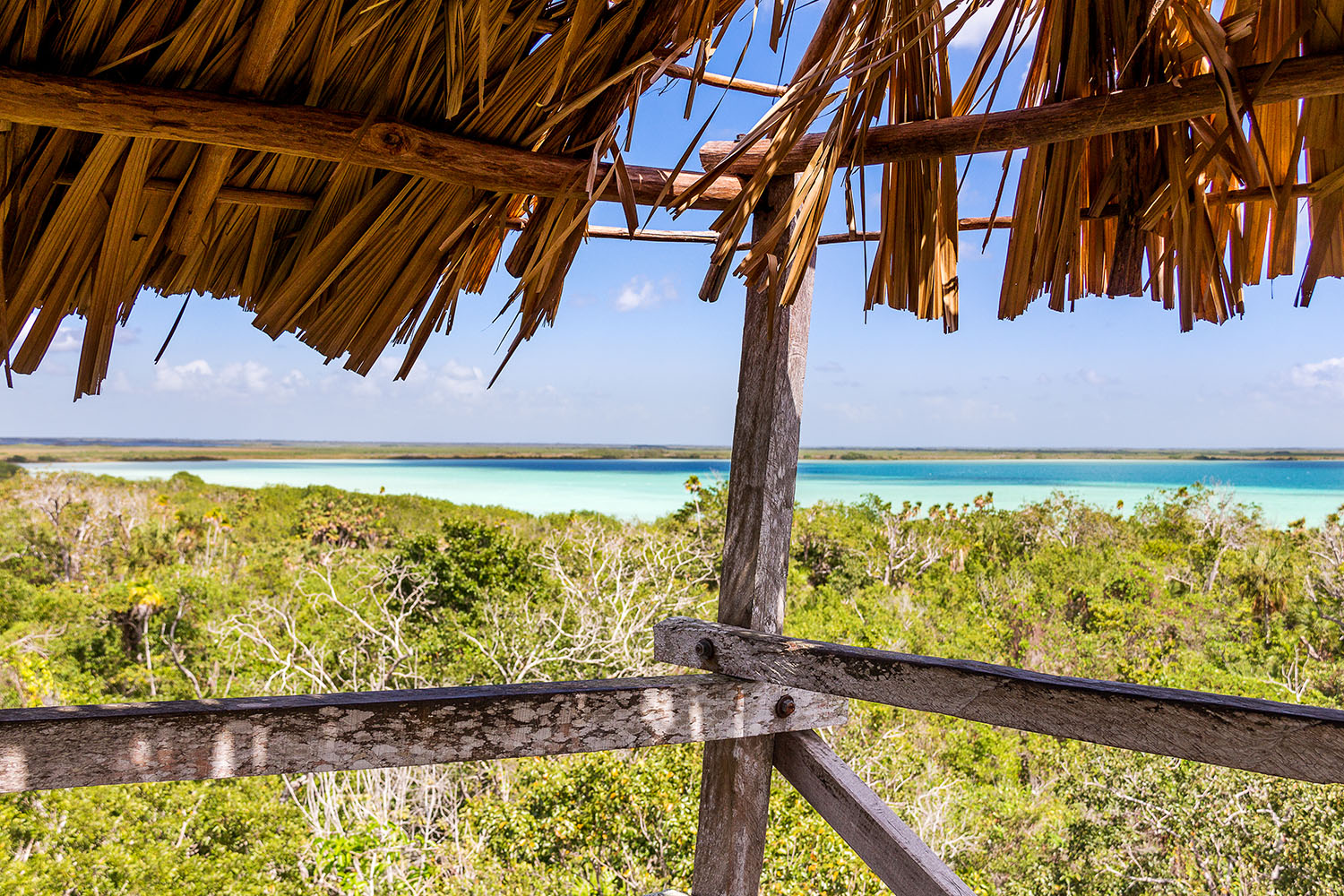
Looking over the forest to the lagoons of Sian Ka’an Biosphere Reserve (Photo: Paul Stafford)
See a Maya pyramid that doesn’t get overwhelmed with tourists
When you visit the Tulum ruins, you’ll soon realise it’s hard to pretend to be Indiana Jones when there are dozens of people filling every photograph you try to take of the ancient ruins. But at Muyil, some 20km south of Tulum, you will find one of the most impressive Maya pyramids anywhere along the coast. This highlight is surrounded by further sections of temples and the former homes of dignitaries, many of which lie buried deep in the rainforest, covered in roots and feeling delightfully wild. The best part about it is that hardly anybody ventures down this way, making a beeline instead for the classic sites of Cobá or Chichén Itzá. So expect only to share this marvel with a couple of other people and a load of iguanas.
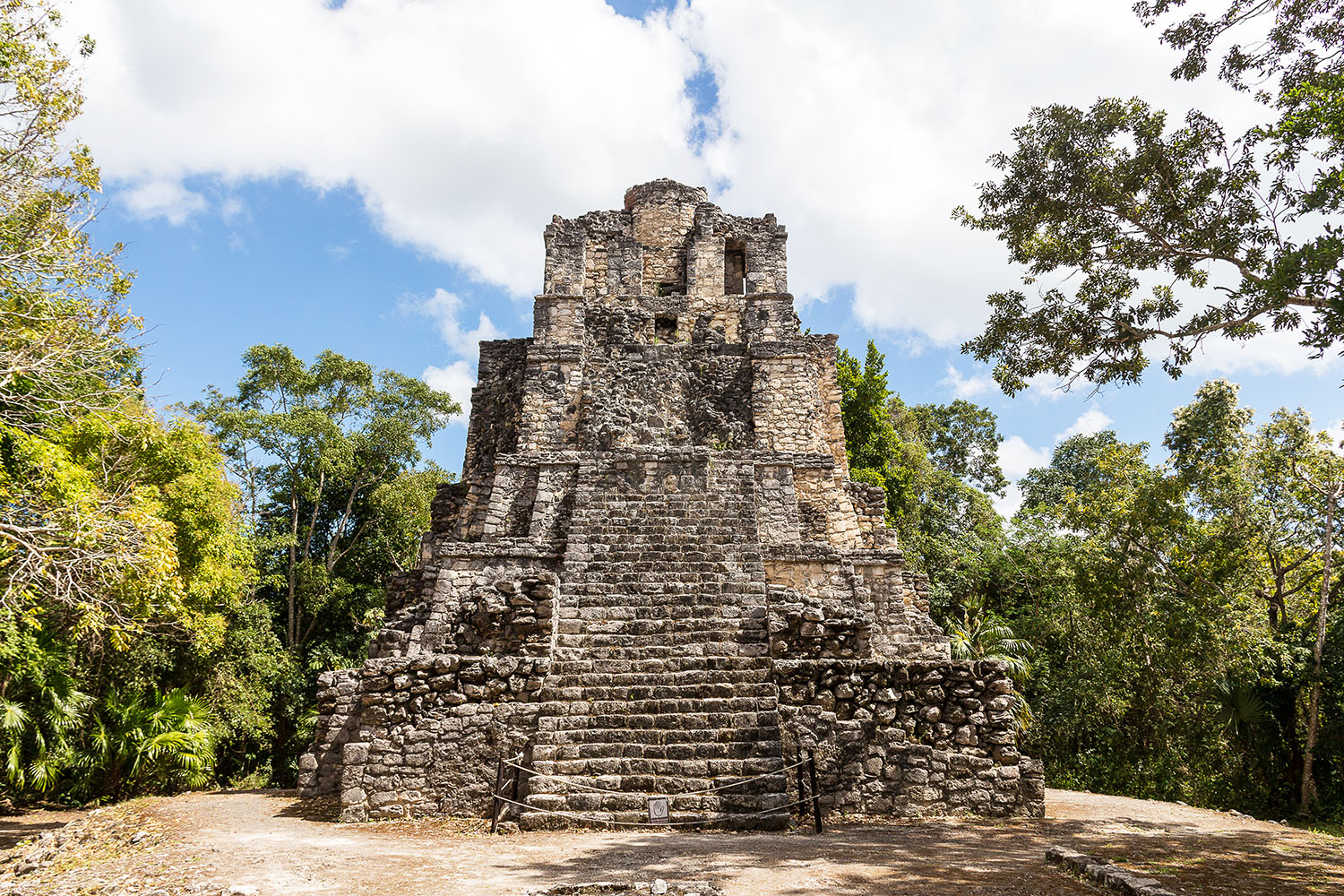
The pyramid at Muyil (Photo: Paul Stafford)
Strike a pose at a yoga class
Attracted by the spiritual aspect of the area, Tulum is popular with yogis, as evidenced by the abundance of studios along the beach and in town. Many of the resorts and studios offer lengthy retreats where you can practice several times daily. One of the more unique offerings is SUP Yoga (yoga on a standup paddleboard). La Casa Surya offers classes in both yoga and freediving. And if animals are your thing, be sure to check out Yoga Dicha Studio, where part of your class fee goes to support local nonprofit Help Tulum Dogs. You can even take a class that involves rescue puppies. No doubt you’ll be working on your downward dogs.
Get your body moving at a salsa night
If you’re in the Pueblo side of Tulum then you are likely to find a place to treat your dancing feet. The town is little more than a dusty, poorly planned sprawl of buildings that have been rapidly constructed to keep pace with the rapid rate of growth seen locally. As such there’s no official high street, but pretty much all major restaurants and bars are ranged either side of the Cancún-Chetumal highway, which acts as the main thoroughfare in town. The best places can be found to the east of the ADO bus terminal, with Caribe Swing, Santino Bar and occasional gigs at Pasito Tun Tun making for good options.
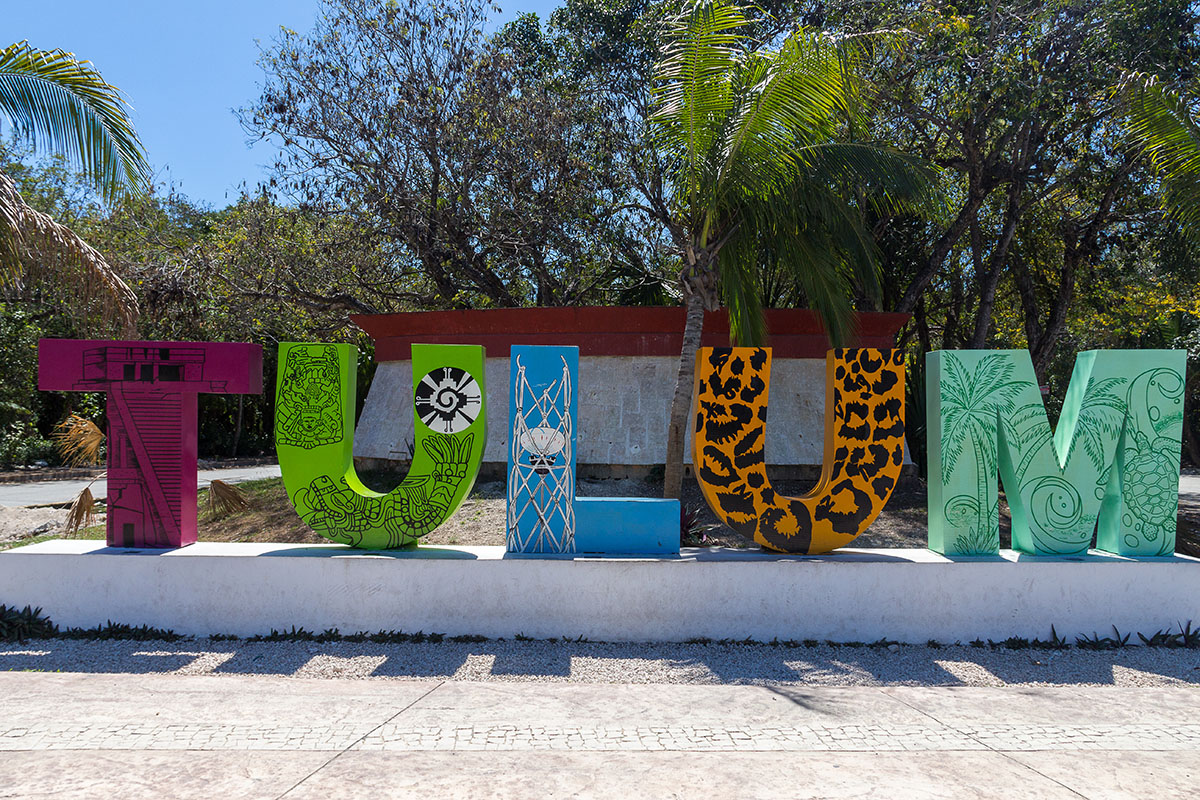
Welcome to Tulum (Photo: Paul Stafford)
Learn Spanish at Meztli Spanish Language School
You may not think “school” when you think of Mexican beach vacations, but trust us on this one. The most common course at Meztli Spanish Language School lasts one week and includes three hours of group-based tuition per day, plus the opportunity to participate in extracurricular activities like morning yoga, salsa lessons, and cooking classes. All activities are conducted in Spanish and are included in the price. Although prices are slightly steep compared with less tourist-centric parts of Mexico, the immersive approach is a great way to take a shorter Spanish course while in this part of Mexico. There are additional add-ons including home-stays with local families and afternoon excursions to various regional highlights.
Take part in a ritual temazcal ceremony
Tulum is a spiritual place, and while there’s plenty of new-age takes on that, this is Maya country still. The ancient purification ritual of temazcal started many centuries ago and takes place in a traditional clay dome, which becomes a sweat lodge/steam bath as water or fragrant tea is splashed over heated volcanic rocks. Its purpose is to cleanse the mind, body and spirit, and to reconnect practitioners with Mother Earth. Several of the beach resorts offer temazcal ceremonies, which usually last a couple of hours. At the time of writing, there were two highly-rated options in or near Tulum: Yäan Wellness and Dos Palmas.